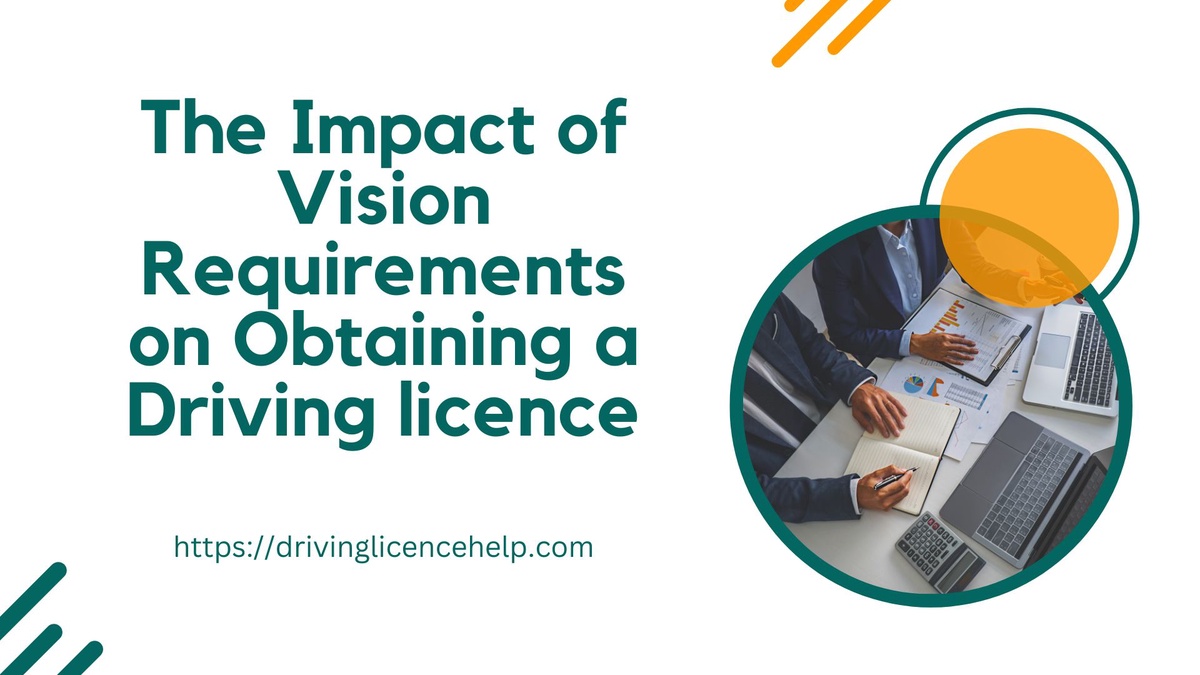Introduction:
Obtaining a driving licence is an important milestone that comes with certain responsibilities. One crucial aspect that influences the issuance of a driving licence is meeting the vision requirements set by licensing authorities. In this article, we will explore the impact of vision requirements on obtaining a driving licence and why they are essential for road safety.
Importance of Vision Requirements:
Vision plays a critical role in driving safely. Clear and accurate vision allows drivers to perceive and react to road signs, obstacles, and other vehicles in a timely manner. By establishing vision requirements, licensing authorities aim to ensure that drivers have adequate visual acuity and field of vision to operate a vehicle safely.
Vision Tests:
To assess an individual's visual capabilities, driving licence applicants are typically required to undergo a vision test. This test measures various aspects, including visual acuity (sharpness of vision), peripheral vision, color vision, and depth perception. The specific requirements may vary depending on the jurisdiction, but the purpose is to identify any potential vision impairments that could affect driving ability.
Corrective Lenses:
For individuals who have vision impairments that can be corrected with glasses or contact lenses, the use of corrective lenses may be permitted to meet the vision requirements. It is important for drivers to wear their prescribed corrective lenses while driving to maintain optimal visual acuity and comply with licensing regulations.
Safety Considerations:
The vision requirements for obtaining a driving licence are in place to promote road safety. Drivers with uncorrected or severe vision impairments may have difficulty perceiving road signs, recognizing hazards, or judging distances accurately, putting themselves and others at risk. By enforcing vision standards, licensing authorities aim to minimize the chances of accidents caused by visual limitations.
Periodic Vision Testing:
In addition to meeting the vision requirements during the initial driving licence application process, some jurisdictions also require periodic vision testing during licence renewal. This ensures that drivers maintain adequate vision throughout their driving years and reduces the likelihood of undetected vision deterioration affecting their ability to drive safely.
Conclusion:
The impact of vision requirements on obtaining a driving licence cannot be overstated. By setting and enforcing these requirements, licensing authorities prioritize road safety by ensuring that drivers have the visual acuity necessary to navigate the roads confidently and responsibly. It is essential for all aspiring drivers to prioritize their eye health, undergo regular eye examinations, and address any vision impairments to meet the vision requirements and promote a safer driving environment for everyone on the road. Remember, clear vision leads to safer driving!
Additionally, it is crucial for individuals to understand that vision requirements for a driving licence are not meant to be restrictive but rather to enhance safety on the roads. By maintaining good eye health and addressing any vision issues promptly, drivers can ensure they meet the necessary standards and continue to drive safely.
If an individual does not meet the vision requirements initially, it is important not to feel discouraged. In many cases, vision impairments can be corrected with the use of glasses, contact lenses, or other visual aids. By working closely with an eye care professional, individuals can explore options to improve their vision and meet the necessary standards for obtaining a driving licence.
It is also worth noting that vision requirements may vary slightly from one jurisdiction to another. Therefore, it is essential to familiarize oneself with the specific regulations and guidelines set by the local licensing authority. This will help individuals understand the specific vision tests and standards they need to meet in order to obtain their driving licence.
See Also: Driving Licence Renewal
Lastly, it is essential for all drivers to prioritize regular eye examinations, even after obtaining a driving licence. Vision can change over time, and periodic check-ups can ensure that any changes are detected early and addressed appropriately. By maintaining good eye health and complying with vision requirements throughout their driving years, individuals can continue to enjoy the privilege of driving safely and responsibly.
In conclusion, the impact of vision requirements on obtaining a driving licence is crucial for promoting road safety. By assessing visual acuity and ensuring that drivers meet the necessary standards, licensing authorities aim to reduce the risk of accidents caused by vision impairments. It is imperative for all individuals to prioritize their eye health, address any vision issues promptly, and comply with the vision requirements to contribute to a safer and more secure driving environment for themselves and others on the road. Safe travels!


No comments yet